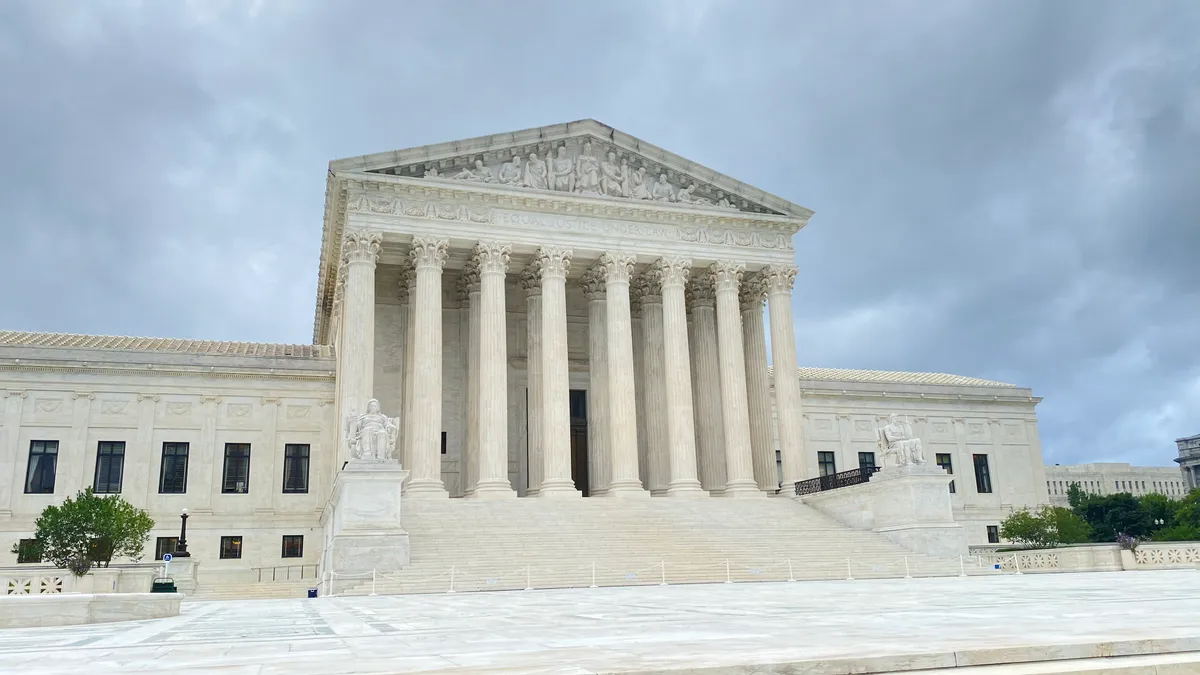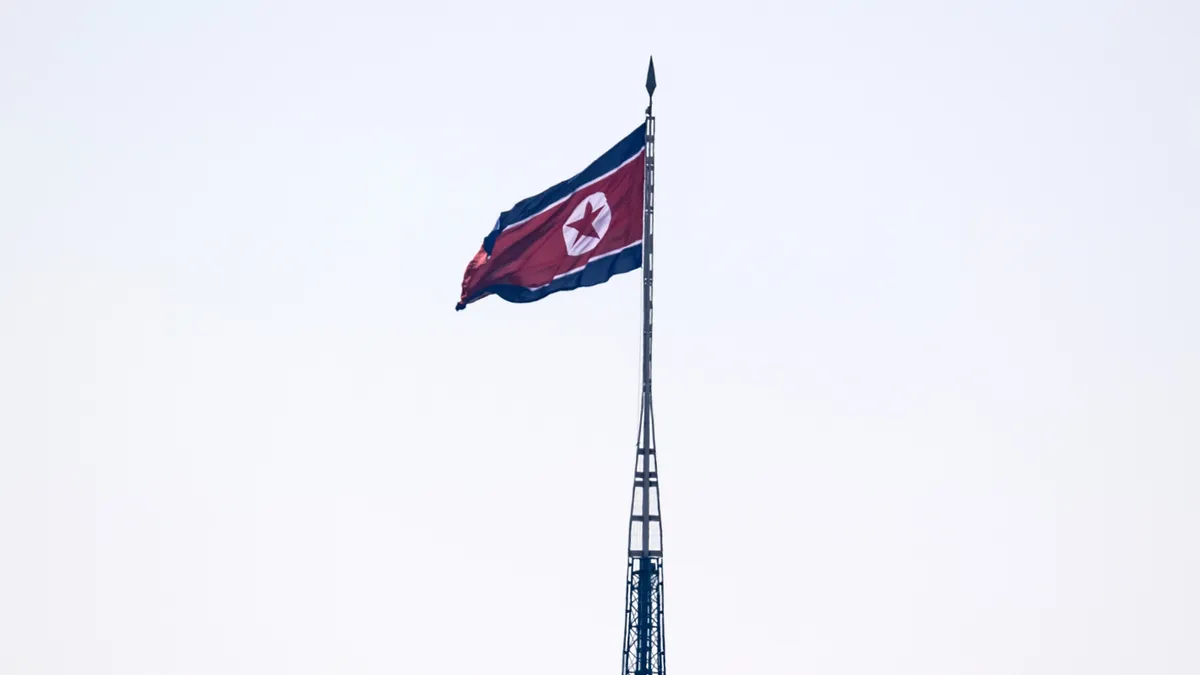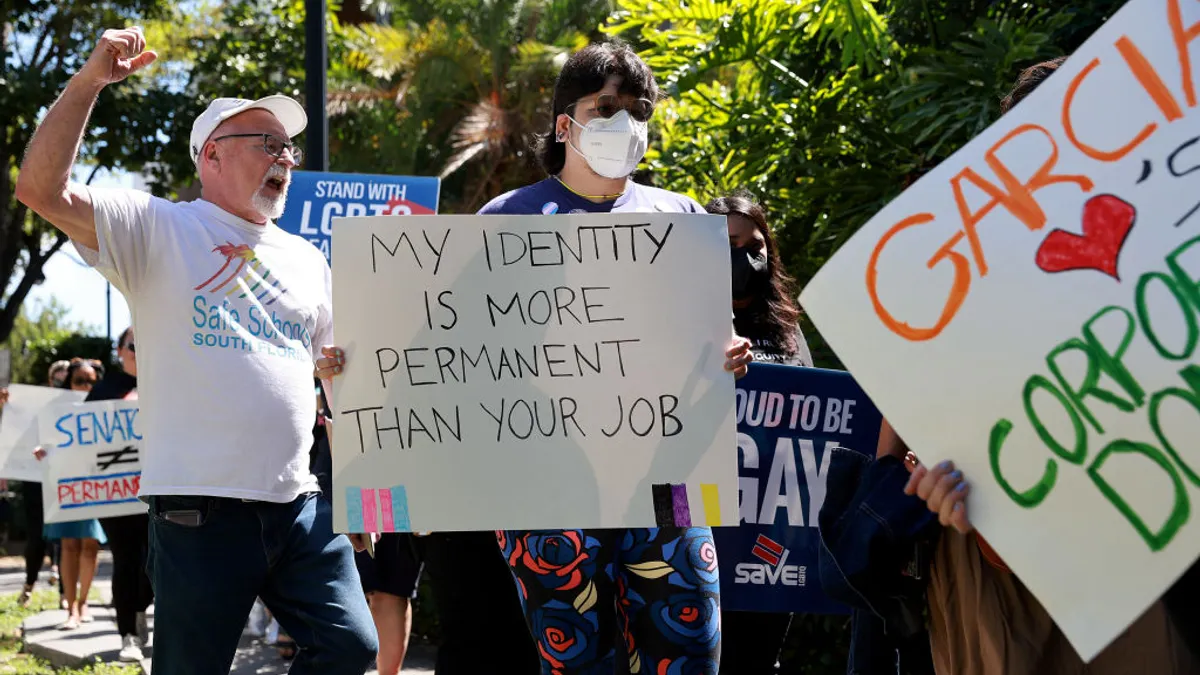On Wednesday, the U.S. Supreme Court pondered a series of odd scenarios in a discussion of how it should distinguish which types of discrimination against workers of a protected class under Title VII of the 1964 Civil Rights Act are actionable.
In Muldrow v. City of St. Louis, the high court has been asked to decide whether transfer decisions are prohibited by Title VII absent a court finding that such decisions caused an employee a “significant disadvantage.” But in the course of that inquiry, oral argument for the case turned to the subject of colored pens.
The justices asked Brian Wolfman, counsel for the petitioner, how the court should determine when a discriminatory workplace policy is injurious under Title VII. Wolfman said his client’s position is that discrimination — even in the form of a pen — is injurious in and of itself.
“If pink pens and blue pens are distributed to all [employees] on a random basis, I think we can consider that trivial,” he said. “But if they're distributed on the basis of race, immediately that becomes nontrivial. And I think most people understand intuitively that, if those pens are distributed on the basis of race, that could be stigmatizing.”
Similarly, Chief Justice John Roberts and Justice Ketanji Brown Jackson posed the example of a workplace in which employees are ordered to work in differently painted offices based on their sex.
“You have [two offices], and one is red and one is blue,” Jackson said. “They're otherwise identical. And the boss says, ‘I think women should be in red offices’ … Is it the government's position that the woman would have to, in that scenario, not only prove that she was selected for this treatment because she was a woman but also that working in a red office significantly injured her?”
Aimee W. Brown, assistant to the solicitor general and amici curiae for the petitioner, responded to Jackson by stating that discrimination based on a protected characteristic is sufficient to demonstrate harm under Title VII.
Conversely, Robert M. Loeb, counsel for respondent City of St. Louis, said that a woman placed in a red office would have to show material evidence that she has been harmed by her boss’ strangely specific sex-based chromatic policy.
“We'd say that [the women are] not harmed unless they could show that the [...] policy is stigmatizing them,” Loeb said.
The challenge of ‘significant disadvantage’ bars under Title VII
Title VII prohibits employers from discriminating against individuals with respect to compensation as well as the terms, conditions or privileges of employment. However, the petitioner in Muldrow argued that a split has developed between federal circuit courts of appeal on the issue of which discriminatory employment practices are actionable under Title VII.
The 8th Circuit, from which the appeal in Muldrow arose, held that the employee, a police sergeant, did not demonstrate that she suffered a “materially significant disadvantage” as a result of a forced transfer and subsequently denied transfer request.
Wolfman and Brown said Wednesday that the kind of “significant disadvantage” language utilized by the 8th Circuit — among others — clashes with the plain meaning of Title VII.
“The [City of St. Louis] fights against the clear text principally by claiming that the phrase ‘discriminate against’ incorporates a significant disadvantage requirement,” Brown said. “But to ‘discriminate against’ simply means drawing distinctions that injure protected individuals. And this Court has repeatedly recognized that being denied equal treatment because of a protected characteristic gives rise to an actionable harm. That’s all the statute requires.”
Loeb, meanwhile, argued that the proposition that Title VII has no harm requirement is contrary to the high court’s 1998 ruling in Oncale v. Sundowner Offshore Services, Inc. as well as its 2006 decision in Burlington Northern & Santa Fe Railway Co. v. White.
“[Petitioners] argue there is no harm requirement, and subjective sensitivities all will support an action, and that’s not only contrary to Oncale, it’s directly contrary to how this Court read the very same language of “discriminate against” in Burlington Northern, examining the [Civil Rights Act] precedent and saying you need material objective harm.”
Wolfman said during rebuttal that while some lower courts have been applying “significant disadvantage” requirements, such inquiries fall outside Title VII statute.
“These cases, meaning these types of cases [that ask] the question [of] whether something is harmful enough, have consumed enormous judicial resources seeking to answer a question far removed from the core Title VII inquiry whether an employer has discriminated against an employee based on a protected characteristic,” Wolfman said.
One observation on this point came from Justice Neil Gorsuch, who expressed concerns about harm requirements and Title VII’s scope.
“I think we’ve also kind of indicated in our cases that when you treat someone worse than another person because of race or sex, that’s kind of the end of it, and there isn’t a further inquiry into how badly you treated somebody worse,” Gorsuch said. “And once the courts get into the business of asking whether that injury is material or a reasonable person would be offended by it, that’s a whole different extra textual layer that’s going to weed out a bunch of claims based on a judge’s sensibilities about how bad is bad enough.”
Where do transfers fall?
Members of the court, including some of its conservative wing, challenged Loeb’s position that a transfer decision alone falls under the kind of “trifles” that Congress did not intend to legislate when enacting Title VII.
Justice Brett Kavanaugh, for instance, questioned comparing the kind of transfer to which the employee in Muldrow was subjected to transfers in which employees are given a different colored pen or office paint. “When you’re transferred from one office to another or one branch to another that’s a lot different, it strikes me,” Kavanaugh said.
Ellen Eardley, managing partner at Mehri & Skalet, told HR Dive that forced transfers motivated by protected characteristics can have much the same effect on employees as other discriminatory employment actions, such as the assignment of certain job duties, losses in pay or benefits, or being denied a promotion.
Eardley, a civil rights attorney who said she primarily represents employees, pointed to the high court’s 1986 decision in Meritor Savings Bank, FSB v. Vinson as a potential indicator for how the court could rule in Muldrow. In Meritor, the court held that claims of “‘hostile environment’” sexual harassment are a form of sex discrimination under Title VII, and that the language of Title VII is not limited to “‘economic’” or “‘tangible’” discrimination.
“I think it’s very similar to the question that’s before the court now,” Eardley said of Meritor, adding that the question of whether a forced transfer changes the terms and conditions of employment is the same as what the court faced in determining whether harassment could alter such terms and conditions.





















